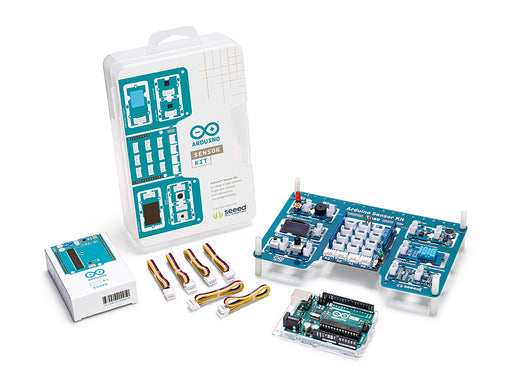
Overview
This is a multifunctional sensor that gives you temperature and relative humidity information at the same time.
It utilizes a TH02 sensor that can meet measurement needs of general purposes. It provides reliable readings when environment humidity condition inbetween 0-80% RH, and temperature condition inbetween 0-70°C, covering needs in most home and daily applications that don't contain extreme conditions.
Features:
- Wide operating voltage range:(3.3V ~ 5V)
- Low Power Consumption:350 µA during RH conversion
- 0 to 100% RH operating range
- Measuring Range: Humidity: 0% - 80% RH Temperature: 0 ~ 70 °C
- Accuracy: Humidity: ±4.5% RH
- Temperature: ±0.5°C
- I2C host interface
- Excellent long term stability
Tech specs
|
Items |
Min |
|
PCB Size |
2.0cm*4.0cm |
|
Interface |
2.0mm pitch pin header |
|
IO Structure |
SIG,VCC,GND,NC |
|
ROHS |
YES |
Electronic Characteristics
|
Items |
Conditions |
Min |
Norm |
Max |
Unit |
|
VCC |
- |
3.3 |
- |
5 |
Volts |
|
Measuring Current Supply |
- |
1.3 |
- |
2.1 |
mA |
|
Average Current Supply |
- |
0.5 |
- |
1.1 |
mA |
|
Measuring Range |
Humidity |
20% |
- |
90% |
RH |
|
Temperature |
0 |
- |
50 |
°C |
|
|
Accuracy |
Humidity |
- |
- |
±5% |
RH |
|
Temperature |
±2 |
°C |
|||
|
Sensitivity |
Humidity |
- |
1% |
RH |
|
|
Temperature |
1 |
°C |
|||
|
Repeatability |
Humidity |
±1% |
RH |
||
|
Temperature |
±1 |
°C |
|||
|
Long-term Stability |
±1% |
RH/year |
|||
|
Signal Collecting Period |
2 |
S |
Get Inspired
An IoT Moisture sensor that sends moisture data from an Arduino Nano 33 IoT to the Arduino IoT Cloud

As climate change continues to worsen, events such as heavy rains, hurricanes, and atmospheric rivers have only intensified, and with them, large amounts of flooding that pose serious risks to life and property. Jude Pullen and Pete Milne, therefore, have responded by creating a "physical app" that can show the potential for flood dangers in real-time with sound, lights, and an ePaper display. The Arduino Nano 33 IoT powering the Flood Alert device sources its data from the UK Environmental Agency’s API to get statistics on an area’s latest risk level along with an extended description of what to expect. Initially, the electronics were mounted to a breadboard and housed within a cardboard enclosure, but a later revision moved everything to soldered protoboard, a 3D-printed case, and even added a piezoelectric buzzer to generate audible alerts. For now, the Flood Alert’s sole source of data is the aforementioned API, but Pullen hopes to expand his potential data sources to include “hyper-local” sensors that can all be aggregated and analyzed to give a much more precise view of flooding in a smaller area. To learn more about Flood Alert and its myriad applications to local communities and beyond, check out the original long read article’ is available at DesignSpark.








